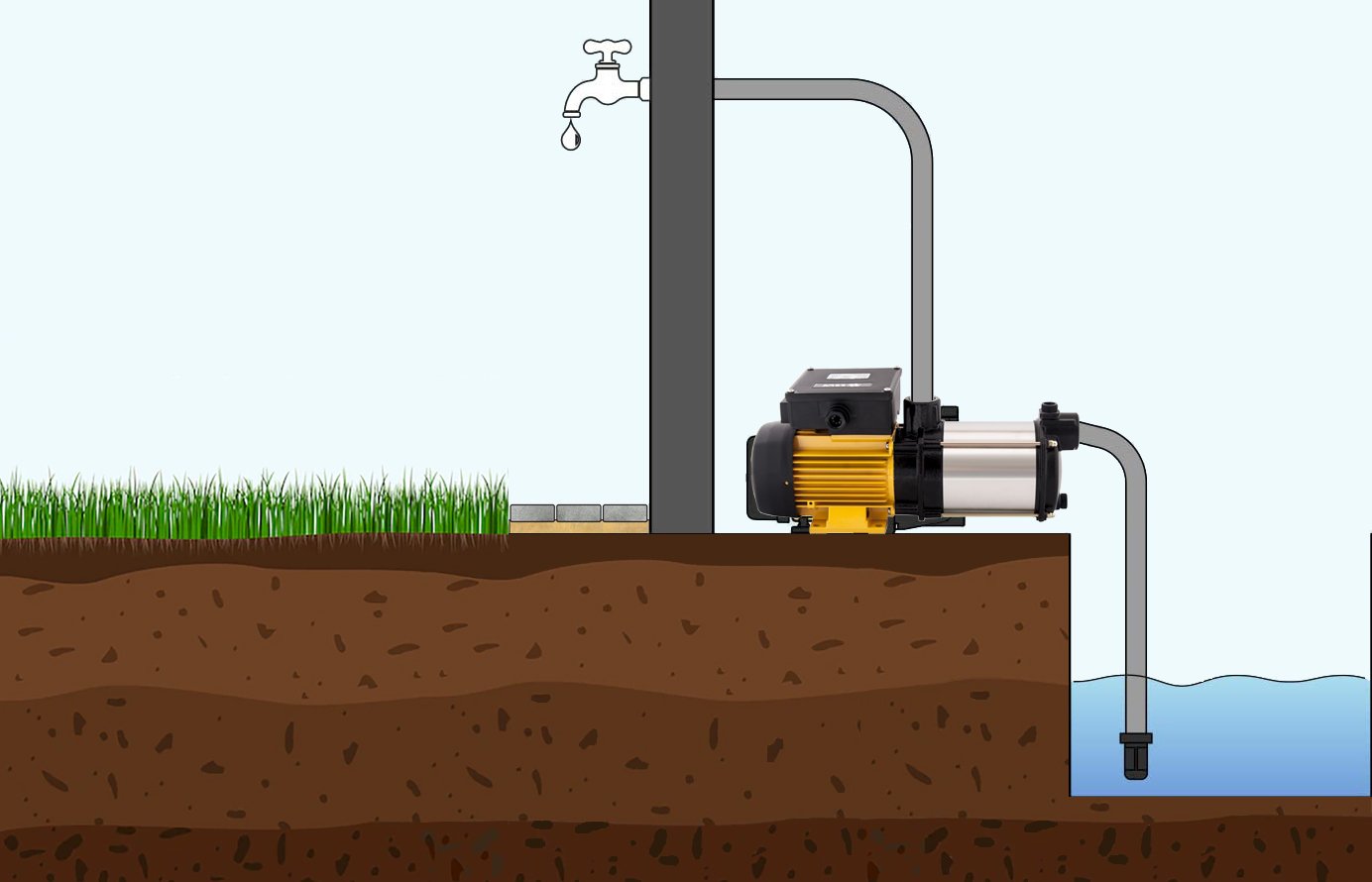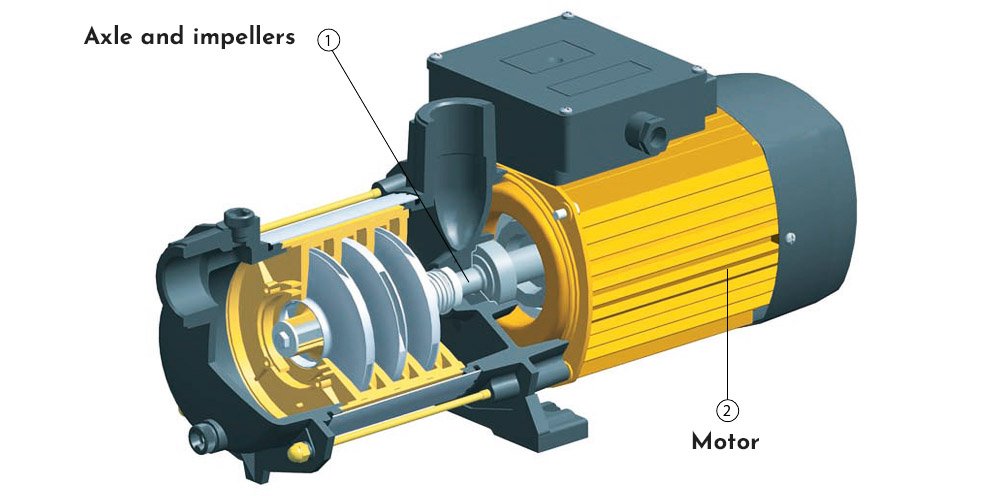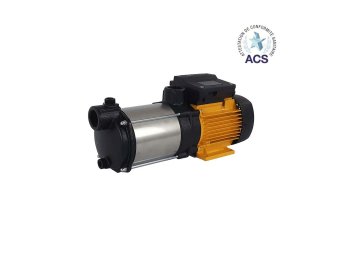PRISMA and ASPRI: the energy-saving horizontal surface pumps by ESPA.
PRISMA and ASPRI: horizontal surface pumps designed for multiple uses and with multicell or multistage technology ideal for greater energy efficiency.
Thanks to their technology and the use of several impellers or turbines, these surface pumps generate with the same power a greater centrifugal force and therefore greater pressure. In other words, these horizontal surface pumps generate greater efficiency, energy savings and hydraulic comfort.Basic information on surface pumps.
Surface pumps are designed to move a fluid from a collection point to a discharge point by generating a flow. The collection point of the fluid (clear water, black water or sewage) can be a reservoir, a well, a swimming pool, a pit, a cellar, a garage, while the discharge point can be the sewer system, a ditch or river, a tank or simply a pipe connected to an irrigation system or a tap for watering the garden. Not only that: some surface pumps can also power household appliances such as dishwashers and washing machines, but also bathrooms and sanitary facilities.Where is the surface pump positioned?
The collection point is generally positioned lower than the discharge point (see the image below):

However there may be cases where the collection point is higher than the discharge point (e.g. rainwater collection tanks).
The types of surface pumps.
In general we can distinguish:- Under the head or above the head surface pumps: they differ according to their position in relation to the liquid. In the case of an under the head surface pump, this is installed at a lower level than the liquid. On the other hand, the above the head surface pump is positioned above the liquid level (see the image above).
- Horizontal or vertical surface pump: the difference is in the axis between the collection and discharge point. In the above image, the surface pump is horizontal because the fluid collection and discharge points are on axis.
- Self-priming or manually filled surface pump: Self-priming surface pumps differ from manually filled surface pumps because they have a higher suction force. They also “prime” themselves, i.e. they can operate without the need to fill the suction line. They are in fact equipped with a non-return valve that prevents emptying.
- Singlestage or multistage surface pump: in the first case the motor body consists of a single cell or turbine, in the case of a multistage or multicellular surface pump we have several impellers or turbines positioned on the same axis (see the image below drawing of the 3D section of the PRISMA 25 by ESPA surface pump). This multicellularity makes it possible to greatly increase the hydraulic head (the ability of a pump to push water away from the collection point).

How to install a surface pump.
The first step to install a surface pump is to connect the collection or suction pipe and the discharge pipe. Once the surface pump is connected, it is good practice to fill the pump casing with fluid in order to eliminate the presence of air in the system as much as possible.
Finally, proceed with the installation and connection of the surface pump to the electric panel. Below is a short video showing the assembly of the PRISMA 15 surface pump connection box:
Once the installation of the surface pump has been completed, it is a good idea to proceed with the first start-up in order to check that everything is working properly. Normally, before switching on the surface pump, the delivery pipe is closed for a few seconds in order to facilitate the draining of the fluid from the collection point. This make sure that any residual air is removed. Then you proceed to re-open the delivery pipe and if everything has been installed correctly you will see the fluid come out. From this moment, the surface pump is ready to be used.
Use and models of the PRISMA and ASPRI surface pumps.
The PRISMA surface pumps and ASPRI surface pumps by ESPA onsidered in this article can be used for pumping clean water for purposes:
- Domestic and industrial: to connect wells to watering systems, for supplying the water system, for emptying rooms, cellars, garages in the event of flooding.
- Agricultural: to connect wells, ponds, waterways to irrigation systems, to recover rainwater and to facilitate irrigation of gardens and agricultural crops.
They are suitable for applications such as water transfer, sprinkler or drip irrigation, domestic pressure sets or industrial pressure sets.
Both surface pump models are horizontal, with cast iron pump body and motor shaft in AISI 304 stainless steel, very silent and also self-priming in the case of the ASPRI model.



























